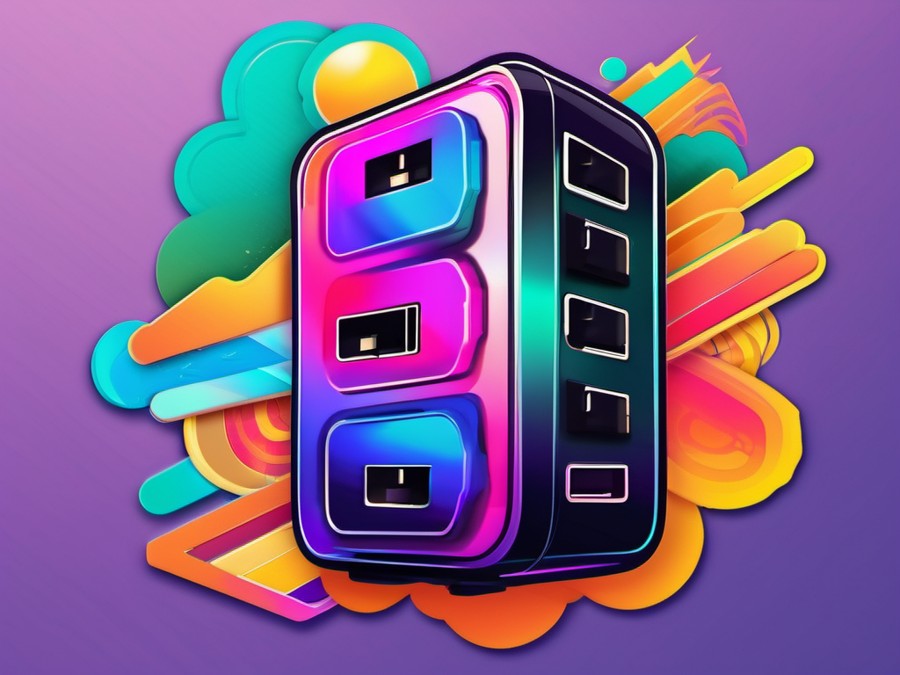· Charlotte Will · USB Hubs · 10 min read
What is a portable USB hub and what are its benefits?
Discover the benefits and uses of a portable USB hub. Learn how it enhances connectivity, productivity, and convenience for remote workers, travellers, and students. Find the best hubs and tips for making an informed purchase.

What is a Portable USB Hub and What are Its Benefits?
Introduction
In today’s fast-paced world, connectivity is key. Whether you’re a remote worker, a frequent traveller, or a student on-the-go, the ability to connect multiple devices seamlessly is not just convenient but essential. This is where a portable USB hub comes in handy. So, what exactly is a portable USB hub? And why should you consider getting one? Let’s dive in and find out.
Understanding the Basics
What is a USB Hub?
A USB hub is essentially a device that expands the number of available USB ports on your computer. It acts as an intermediary, allowing multiple USB devices to be connected via a single USB port. This not only simplifies your setup but also enhances the overall functionality of your devices.
The Need for Portability
In an increasingly mobile world, the need for portable devices has never been greater. A portable USB hub offers the same benefits as a regular hub but with added convenience. Its compact design makes it easy to carry around, which is perfect for those who are always on the move.
Common Uses of a Portable USB Hub
Imagine you’re at a café working on your laptop. You need to connect your external keyboard, mouse, and perhaps even charge your smartphone simultaneously. A portable USB hub can handle all these tasks efficiently without taking up much space on your table. It’s an invaluable tool for anyone who values flexibility and efficiency.
How Does a Portable USB Hub Work?
Connecting Multiple Devices
Think of a portable USB hub as a central station where various devices can connect. It takes the signal from one USB port and distributes it to several other ports, enabling multiple devices to communicate with your computer simultaneously.
Data Transfer and Speed
The speed of data transfer is a critical factor when choosing a portable USB hub. Most modern hubs support USB 3.0 or higher, which means faster data transfer rates and reduced lag times. This is particularly useful for tasks that require quick data exchange, such as transferring large files or streaming media.
Power Delivery
Many portable USB hubs also serve as power banks, delivering the necessary juice to keep your devices running. This feature is especially beneficial for travellers or anyone working in areas with limited power outlets. By providing both connectivity and power, a portable USB hub can be a lifesaver in various situations.
Benefits of Using a Portable USB Hub
Increased Connectivity
The primary advantage of a portable USB hub is its ability to connect multiple devices at once. This could be your laptop, smartphone, tablet, external hard drive, and more—all linked through a single hub. It’s like having an entire office setup in your pocket.
Improved Compatibility
Compatibility issues can be a nightmare, but with a portable USB hub, you can enjoy seamless integration across different devices. Whether you’re using a PC or Mac, the hub ensures that all your peripherals work harmoniously together.
Enhanced Productivity
For remote workers and professionals on the go, a portable USB hub can significantly boost productivity. By providing quick access to necessary tools and peripherals, it streamlines your workflow and allows you to focus on what truly matters—getting the job done.
Convenience and Mobility
One of the standout features of a portable USB hub is its compact size. It fits easily into your bag or pocket, making it an ideal travel companion. No longer do you have to worry about carrying multiple cables or adapters—all you need is your trusty hub.
Portable USB Hub vs. Regular USB Hub
Size and Design
A significant difference between portable and regular USB hubs lies in their design. Portable hubs are generally smaller and more lightweight, which makes them easier to carry around. In contrast, regular USB hubs tend to be bulkier and are often designed for stationary use.
Power and Performance
While regular USB hubs can often handle more powerful devices due to their larger size, portable hubs are no slouch when it comes to performance. They typically support the same data transfer speeds and power delivery capabilities as their larger counterparts, albeit in a more compact form.
Use Cases
Portable USB hubs are particularly advantageous in situations where mobility is key. For instance, if you’re working from a café or airport lounge, the compact design of a portable hub is much more practical. On the other hand, regular USB hubs might be better suited for static office setups where space and portability are less of a concern.
Choosing the Right Portable USB Hub
Key Features to Look For
When shopping for a portable USB hub, there are several features you should consider:
- Number of Ports: Ensure it has enough ports to accommodate all your devices.
- Data Transfer Speed: Look for USB 3.0 or higher for faster data transfer rates.
- Power Delivery: Check if it supports power delivery, which can be handy for charging devices on the go.
- Compatibility: Make sure it’s compatible with both PC and Mac to avoid any compatibility issues.
Popular Brands and Models
There are numerous brands offering high-quality portable USB hubs. Some of the popular ones include Anker, HooToo, and Sabrent. Each brand has its own strengths, so it’s worth doing some research to find the one that best suits your needs.
User Reviews and Ratings
Reading user reviews can provide valuable insights into the performance and reliability of a portable USB hub. Websites like Amazon or specialist tech blogs often have detailed reviews that can help you make an informed decision.
Common Misconceptions About Portable USB Hubs
Are They All the Same?
Not all portable USB hubs are created equal. While some may offer basic functionality, others come with advanced features like power delivery and high-speed data transfer. It’s important to compare different models before making a purchase.
Do They Drain Battery?
This is a common concern, but the reality is that most portable USB hubs are designed to be power-efficient. They won’t drain your battery significantly, especially if you choose one that supports power delivery.
Are They Expensive?
The cost of a portable USB hub can vary greatly depending on the features and quality. While you can find basic models at affordable prices, investing in a higher-end hub can offer better performance and durability.
Real-Life Examples: How People Use Portable USB Hubs
The Remote Worker
Meet Alex, a remote worker who travels frequently. With a portable USB hub, Alex can easily set up a temporary office anywhere—from hotels to cafes. He simply plugs in his laptop, connects his peripherals, and he’s ready to work.
The Traveller
Sarah is a frequent traveller who loves exploring new places. Her portable USB hub allows her to charge multiple devices simultaneously, ensuring she never runs out of power during her adventures. It’s a must-have gadget for her travel kit.
The Student
James, a college student, uses his portable USB hub to connect various devices for projects and presentations. Whether he’s in the library or a classroom, his hub ensures that all his tools are within reach, enhancing both his productivity and creativity.
Setting Up Your Portable USB Hub
Unboxing and Initial Setup
Setting up a portable USB hub is generally straightforward. Once you’ve unboxed your device, simply connect it to your laptop or computer using the provided USB cable. Most hubs are plug-and-play, so you shouldn’t need any additional drivers or software.
Connecting Devices
To connect your devices, just plug them into the available ports on the hub. Whether it’s a keyboard, mouse, external hard drive, or smartphone, the hub will recognize and integrate them with your computer.
Troubleshooting Common Issues
If you encounter any problems, here are some troubleshooting tips:
- Check Connections: Ensure all cables are securely connected.
- Update Drivers: Sometimes, updating your drivers can resolve connectivity issues.
- Refer to Manual: If you’re still having trouble, consult the user manual for more specific guidance.
Maintenance and Care
Keeping It Clean
To maintain the functionality of your portable USB hub, keep it clean. Dust and debris can accumulate over time and affect performance. Use a soft, dry cloth to gently wipe the hub clean periodically.
Storage
When not in use, store your portable USB hub in a cool, dry place. Avoid exposing it to extreme temperatures or humidity, as this can damage the internal components.
Extending Lifespan
Regular maintenance can extend the lifespan of your portable USB hub. By keeping it clean, storing it properly, and addressing any issues promptly, you can ensure that it remains a reliable tool for years to come.
Upgrading Your Portable USB Hub
When to Consider an Upgrade?
If you notice that your portable USB hub is struggling with the number of devices or the speed of data transfer, it might be time for an upgrade. Newer models often come with improved features that can enhance your overall experience.
Latest Features
Modern portable USB hubs offer a range of advanced features, such as:
- Fast Charging: Supports quick charging for compatible devices.
- USB-C Support: Compatible with the latest USB-C devices.
- Ethernet Ports: Some hubs include Ethernet ports for wired internet connectivity.
Investing in Durability
When upgrading, look for hubs made from durable materials. This not only ensures longevity but also enhances the overall user experience, providing peace of mind that your investment will last.
Conclusion
A portable USB hub is more than just a gadget—it’s a versatile tool that can significantly enhance your connectivity, productivity, and overall convenience. Whether you’re a remote worker, frequent traveller, or student, the benefits of owning a portable USB hub are undeniable. From seamless device integration to improved power management, this compact device packs a powerful punch.
FAQs
FAQ 1: Can a portable USB hub charge my laptop?
While most portable USB hubs are not designed to provide sufficient power for charging a laptop, some advanced models do offer this capability. Be sure to check the specifications of the hub before purchasing if this feature is important to you.
FAQ 2: How many devices can I connect at once?
The number of devices you can connect simultaneously depends on the specific model of your portable USB hub. Many modern hubs support connecting up to 7-10 devices at once, providing ample connectivity options for various uses.
FAQ 3: Are portable USB hubs compatible with MacBooks?
Yes, most portable USB hubs are compatible with MacBooks. However, it is always a good idea to check the specifications and user reviews to ensure compatibility, especially if you require specific features like fast charging or data transfer speeds.
FAQ 4: What should I do if my portable USB hub stops working?
If your portable USB hub stops working, the first step is to troubleshoot common issues. Check all connections, update drivers if necessary, and refer to the user manual for further guidance. If the problem persists, you may need to consider repair or replacement.
FAQ 5: Where can I find the best deals on portable USB hubs?
You can find great deals on portable USB hubs through various online retailers like Amazon, as well as tech blogs and review websites that often feature the latest products and discounts. Additionally, check for seasonal sales or promotional offers to get the best value for your money.
This article provides a comprehensive overview of portable USB hubs, addressing their functionality, benefits, and real-world applications. By understanding the intricacies of these devices, you can make an informed decision about whether a portable USB hub is the right fit for your needs. Be sure to explore other related articles for more insights into the world of USB connectivity and productivity tools.
What is a monitor USB hub and its benefits? What is a USB Hub and Why Do You Need One? What is a USB hub with Ethernet and how does it work? What is a USB Modem and What are its Benefits? What is a powered USB hub and do I need one? What is a USB-C Cable and Its Benefits? What is a USB-C Hub and Why Do You Need One? What is a USB Hub and How Can It Boost Your Productivity? What is a USB Hub and How to Choose the Best One?
Enjoy your enhanced connectivity and productivity journey!




